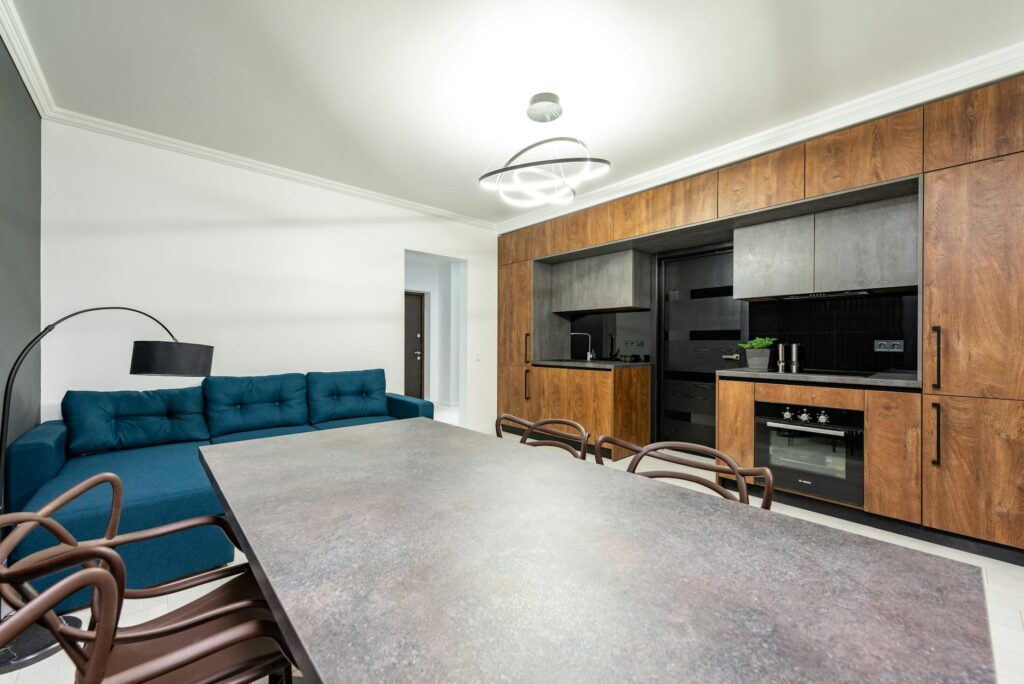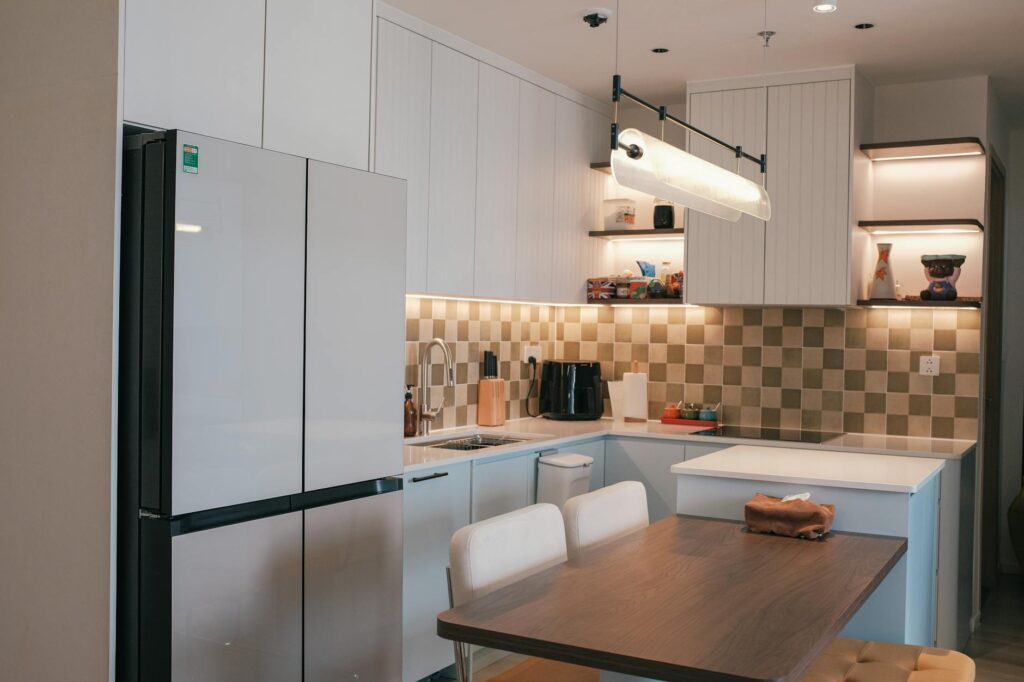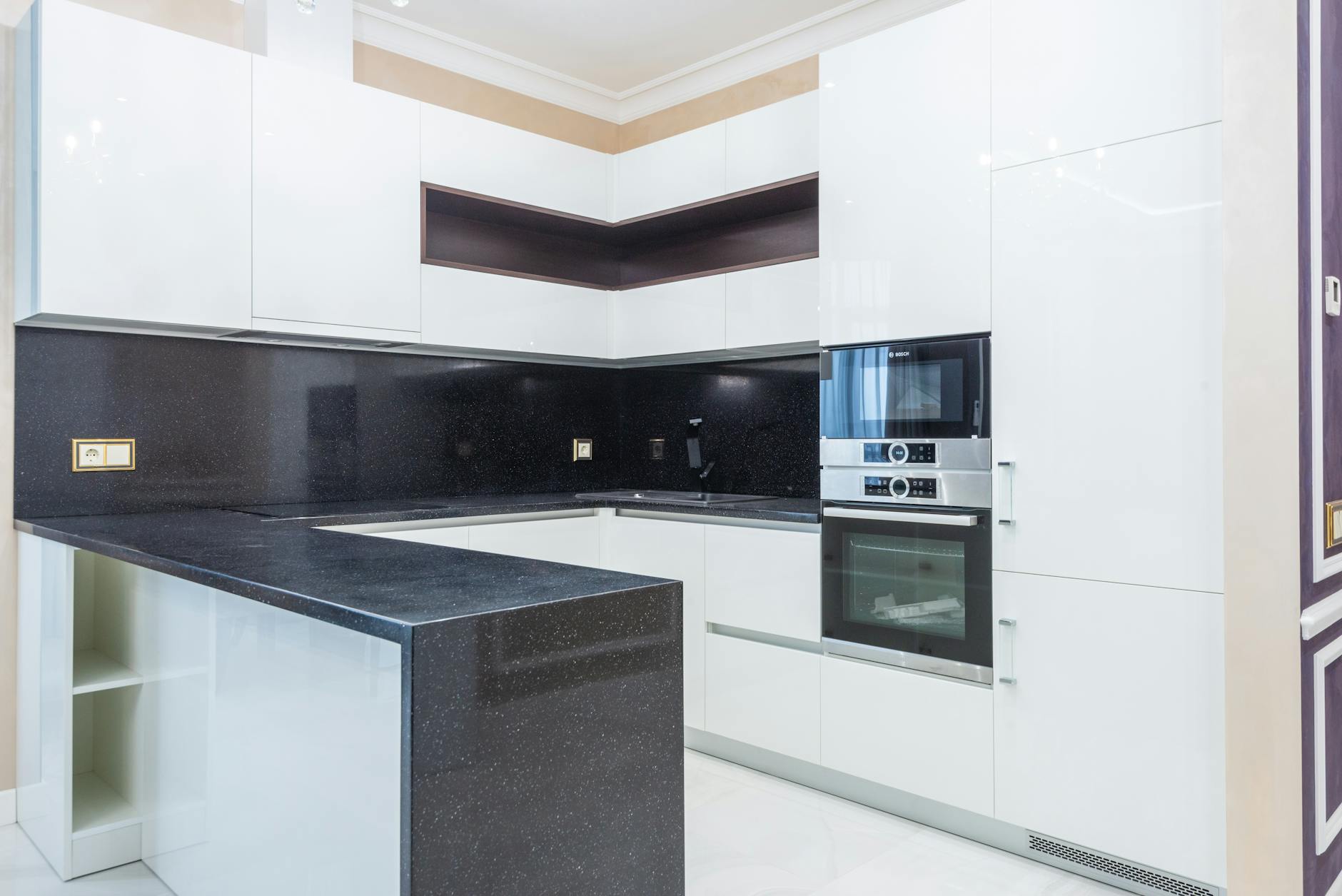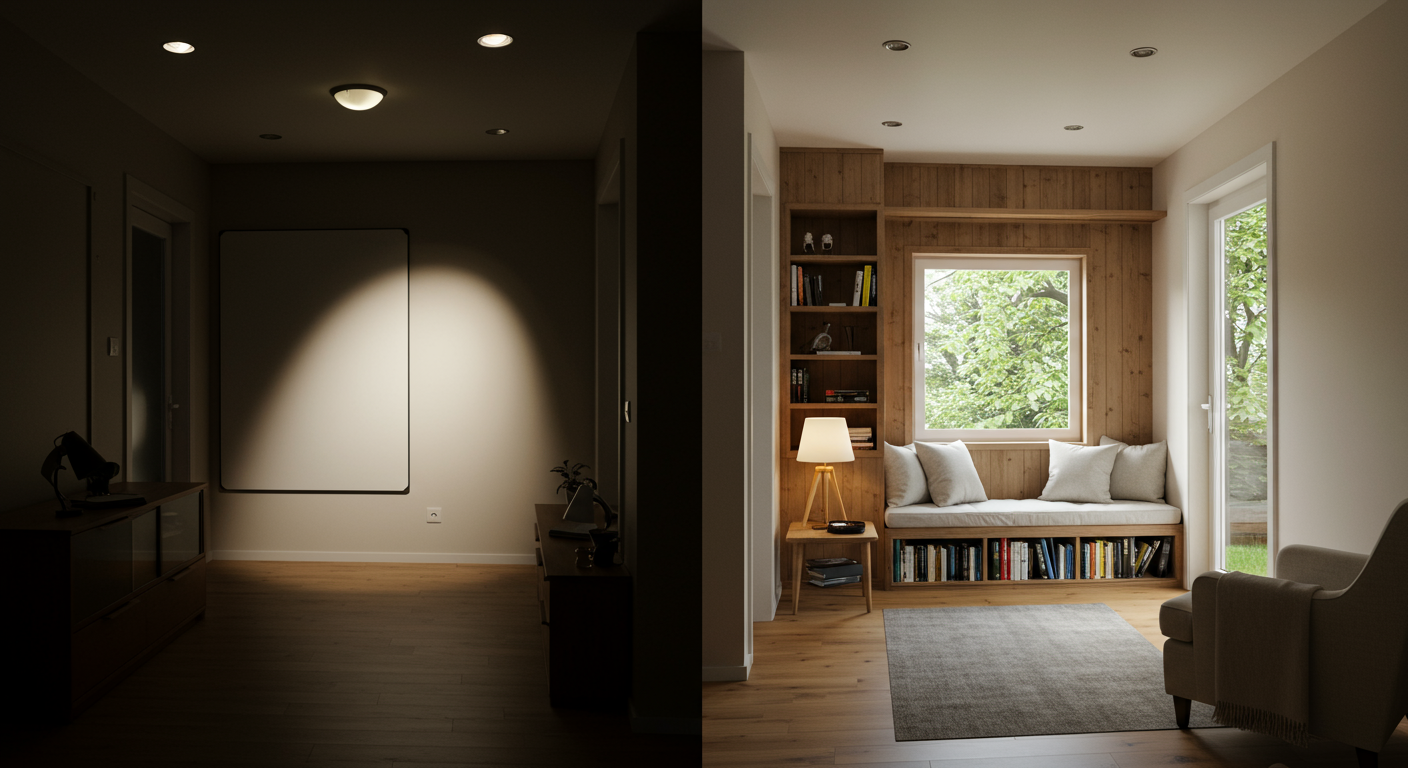Lighting plays a pivotal role in transforming your kitchen from a mere cooking space to a vibrant heart of the home. A well-lit kitchen not only boosts functionality but also enhances its aesthetic appeal. This guide aims to illuminate the path to achieving the perfect kitchen lighting setup that blends utility and style.
The Importance of Layered Lighting
A single overhead light cannot fulfill all your kitchen lighting needs. Embrace the concept of layered lighting, which includes task, ambient, and accent lighting. Task lighting focuses on work areas, ambient lighting adds overall illumination, and accent lighting highlights architectural features or decor. 
Task Lighting Essentials
For chopping, cooking, and reading recipes, task lighting is crucial. Under-cabinet lights are a popular choice for task lighting as they provide direct illumination to countertops without casting shadows. LED strip lights or puck lights can be easy to install and energy-efficient options.
Choosing the Right Fixtures for Ambient Lighting
Ambient lighting in a kitchen fills the space with a warm glow, softening shadows and creating a welcoming environment. Overhead ceiling fixtures, chandeliers, or recessed lighting can serve as your main source of ambient lighting. Consider dimmable options to adjust the mood and energy usage. 
Accent Lighting for Elegance and Focus
Accentuate your kitchen’s design elements with accent lighting. Use track lights, wall-mounted fixtures, or toe-kick lights to highlight backsplashes, artwork, or cabinets. This layer adds depth and dimension, elevating your kitchen’s aesthetic appeal.
Smart Lighting for the Modern Kitchen
Embrace technology by incorporating smart lighting into your kitchen. Smart bulbs and fixtures can be controlled via smartphones or voice assistants, offering convenience and flexibility. Set up schedules, adjust brightness, or change colors to match your mood or activity. 
Natural Light: The Best Light Source
Never underestimate the power of natural light. Maximize it by keeping windows clean and choosing window treatments that allow light to filter through. Skylights or solar tubes can introduce more daylight, reducing the need for artificial lighting during the day.
The Art of Color Temperature
Color temperature impacts the feel of your kitchen. Warm whites (2700K-3000K) create a cozy, inviting atmosphere, ideal for dining areas. Cool whites (3500K-4100K) offer a more neutral, balanced light, perfect for task areas. Experiment with different bulbs to find the right atmosphere.
In conclusion, perfecting your kitchen lighting involves more than just picking out attractive fixtures. It’s about creating a layered lighting scheme that enhances functionality, aesthetics, and mood. Embrace task, ambient, and accent lighting, incorporate natural light, and don’t shy away from modern solutions like smart lighting to achieve a bright, functional space.
Frequently Asked Questions
How can I update my kitchen lighting without major renovations? Consider replacing old fixtures with new, energy-efficient models or adding under-cabinet lighting strips for a quick and effective upgrade.
Is smart lighting worth the investment for kitchens? Absolutely. Smart lighting offers unparalleled convenience and efficiency, allowing you to control lighting settings with a tap of your smartphone or a voice command.
What’s the best way to highlight a kitchen island? Pendant lights or a series of mini-pendants above your island provide direct task lighting while serving as stylish focal points.
Can lighting really change the perception of space in a kitchen? Yes. Proper lighting can make a small kitchen appear larger and more open, while poor lighting can make even a spacious kitchen feel cramped and unwelcoming.
How do I choose the right color temperature for my kitchen? For work areas, cool white bulbs are best for clarity, while warm white bulbs are ideal for creating a cozy, inviting atmosphere in dining or gathering areas.




